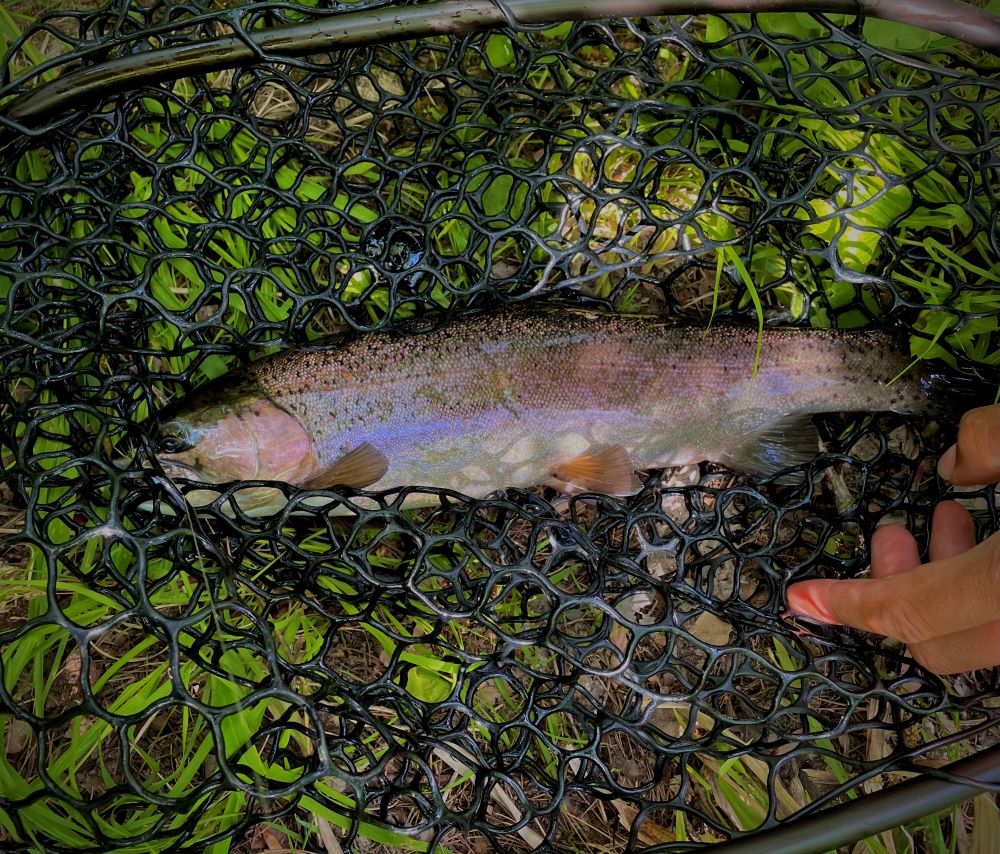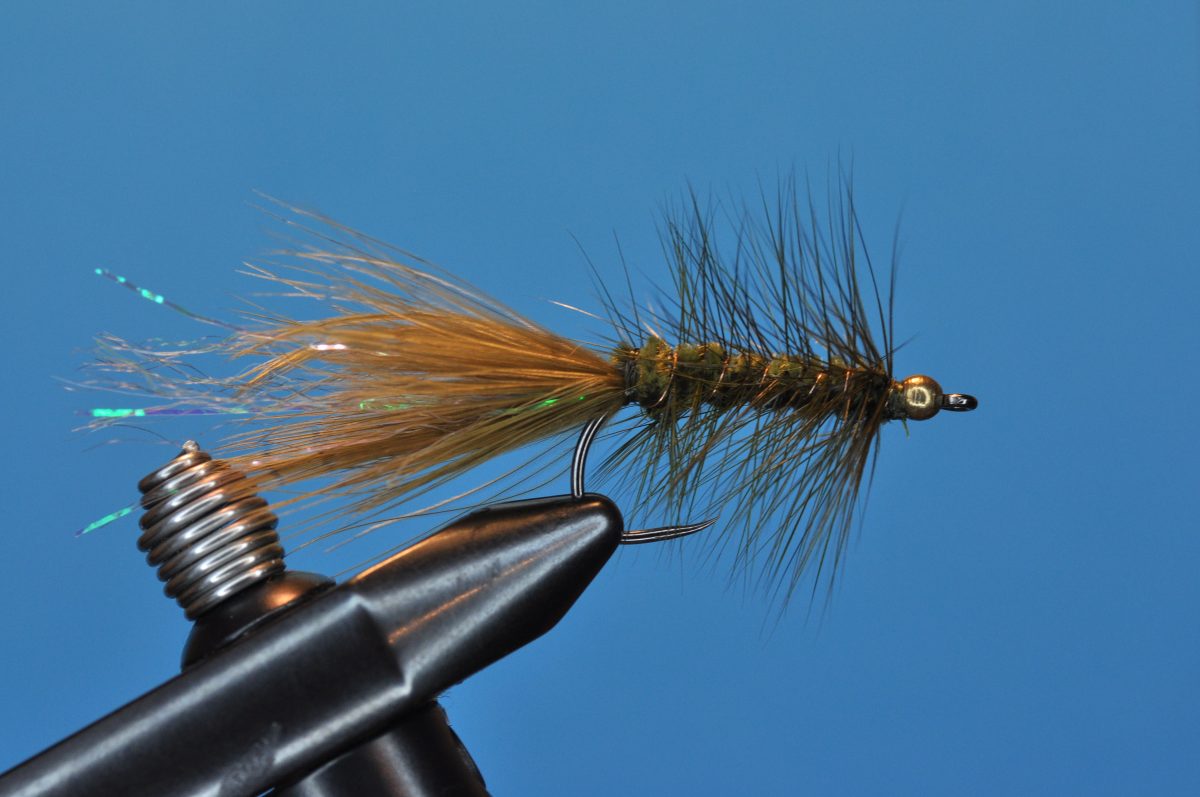
Looking for something else?
Try one of these!
Woolly Bugger Fly Step-by-Step:
“The Woolly Bugger is so effective, it should be banned from some watersheds.”
Bill Hunter in Lefty Kreh’s “The Professionals’ Favorite Flies”
No fly tying blog would be complete without a Woolly Bugger tutorial. And no Woolly Bugger tutorial would be complete without the above quote. Though only created in the 1960s, this simple Palmer-Worm derivation is astoundingly effective and has long held “classic” fly status.
Owing its success to its ability to mimic countless prey items, the woolly bugger is often the first fly we learn to fish and the first fly we learn to tie. Originally tied to immitate a large Dobsonfly nymph (Hellgrammite), the pattern has since been deemed a worthy mimic of baitfish, sculpin, leeches, crayfish, damselflies and even a number of saltwater crustaceans.
Tied as shown, in olive with or without a beadhead, this pattern is a secret fish catching weapon that belongs in every angler’s fly box.
| Materials: | ||
|---|---|---|
 3-4x Long Streamer (size 2-14) 3-4x Long Streamer (size 2-14) |  70 Denier (Olive) 70 Denier (Olive) |  Brass or Tungsten (sized to match) Brass or Tungsten (sized to match) |
 Marabou (Olive) Marabou (Olive) |  Ultra Chenille (Olive; Micro) Ultra Chenille (Olive; Micro) |  Saddle Hackle (Olive) Saddle Hackle (Olive) |
 Flashabou or Krystal Flash Flashabou or Krystal Flash |  Ultra Wire (Small; Gold) Ultra Wire (Small; Gold) |  UV resin or Flex Seal UV resin or Flex Seal |
Disclosure: This post contains affiliate links. A small commission may be paid for purchases made through these links.
Woolly Bugger Fly Step-by-Step Tying Instructions:
(Mobile Viewers: Click images to enlarge or rotate phone to landscape)
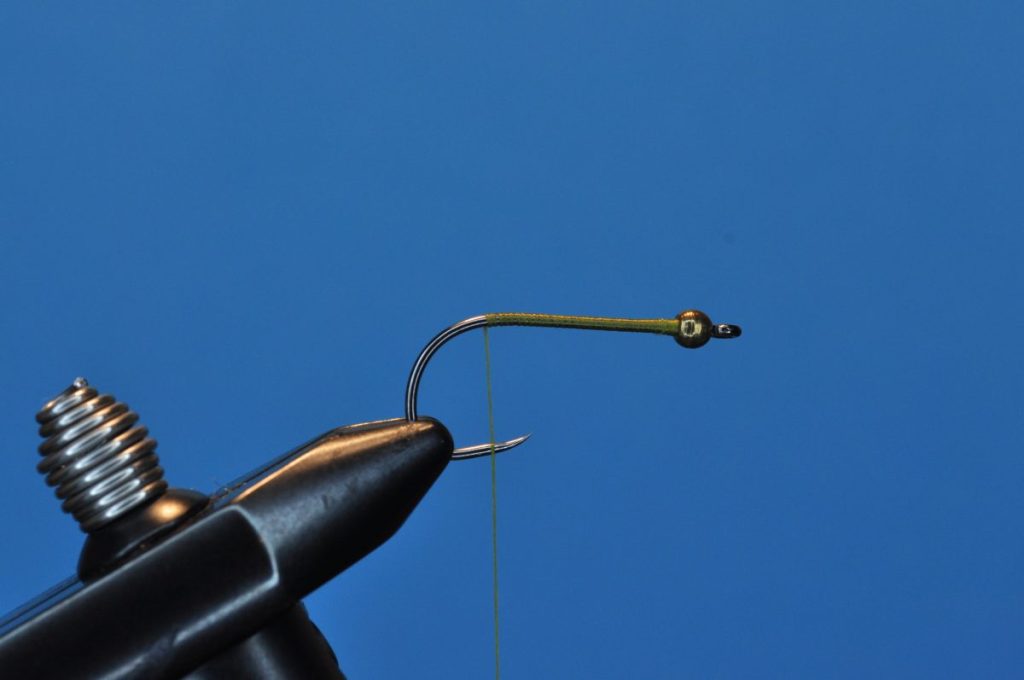
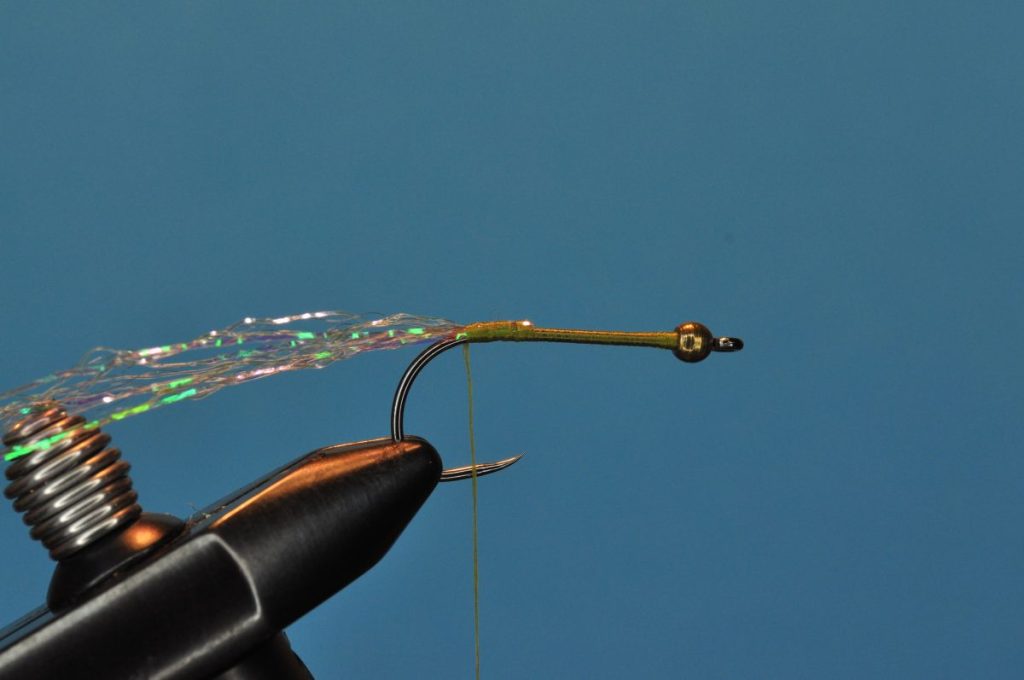
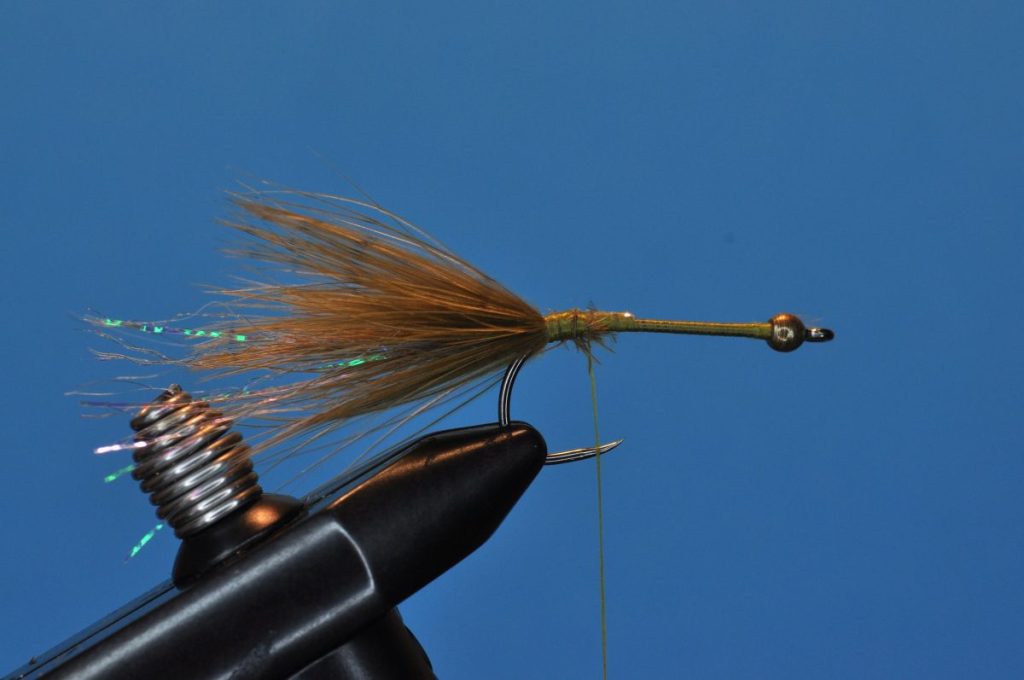
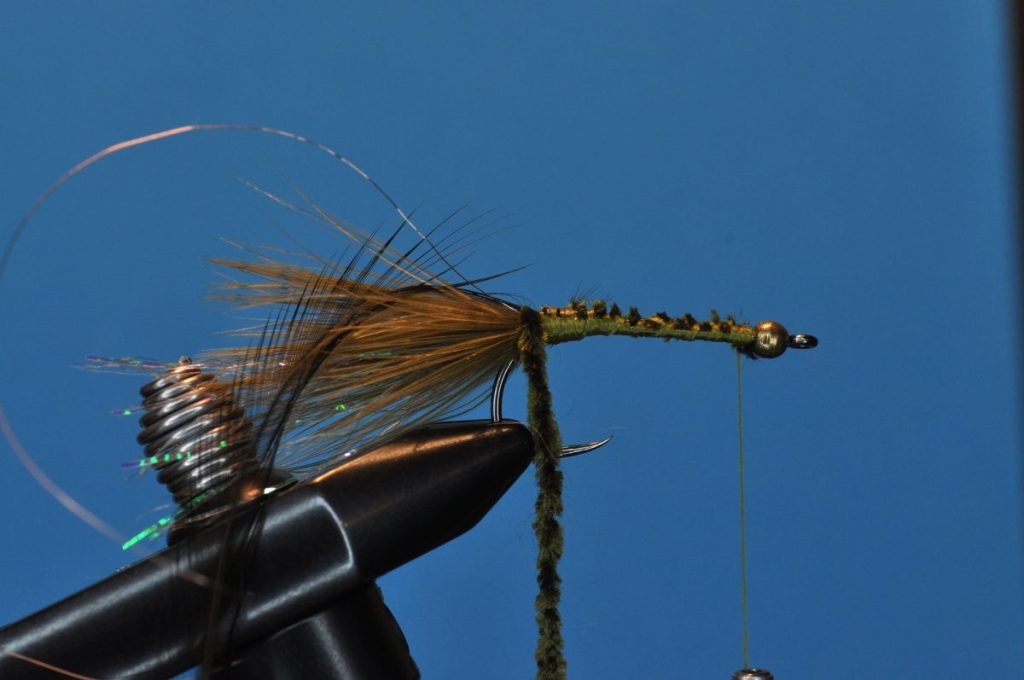
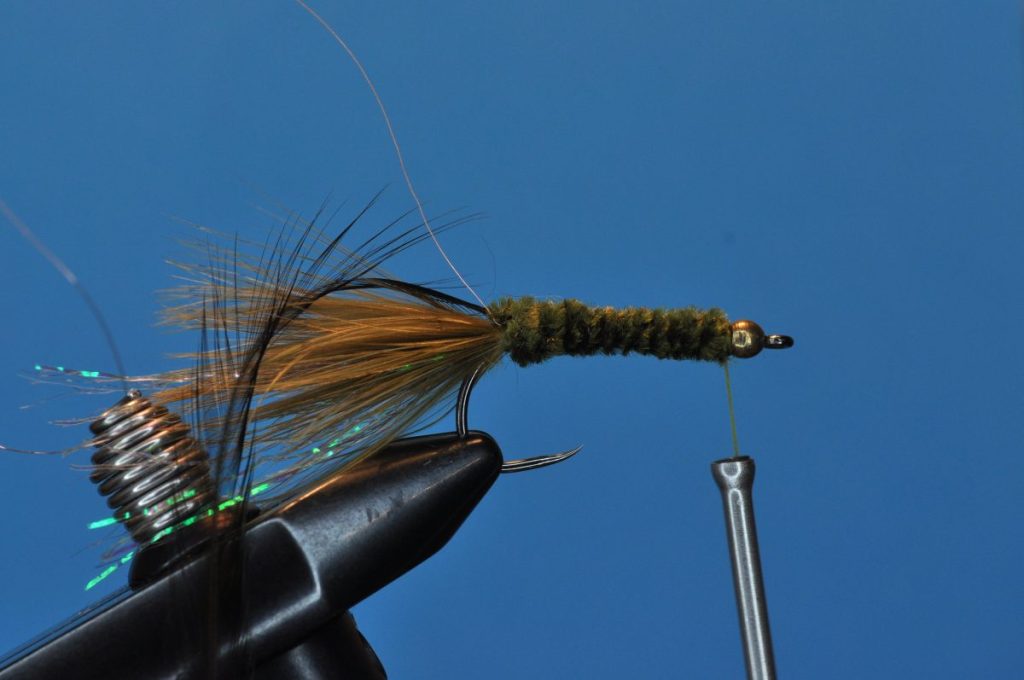
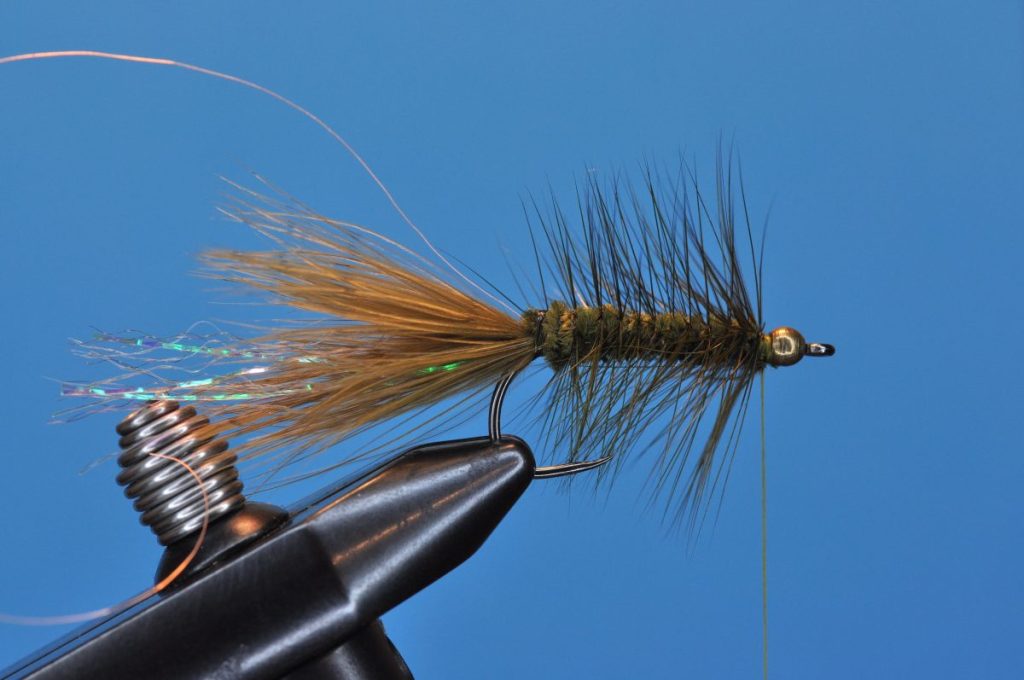
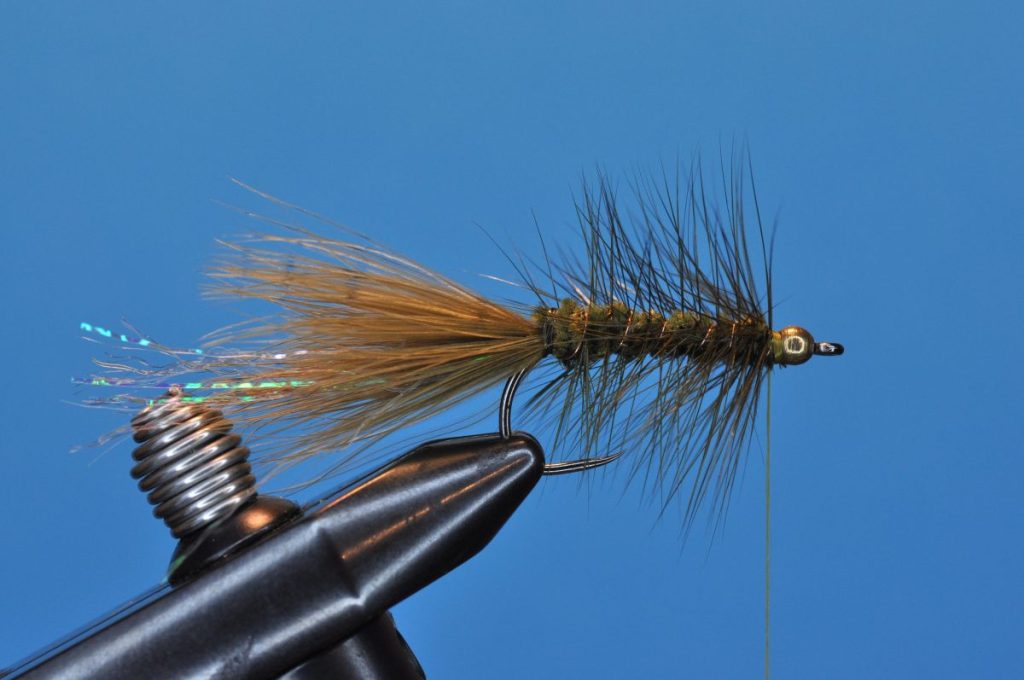
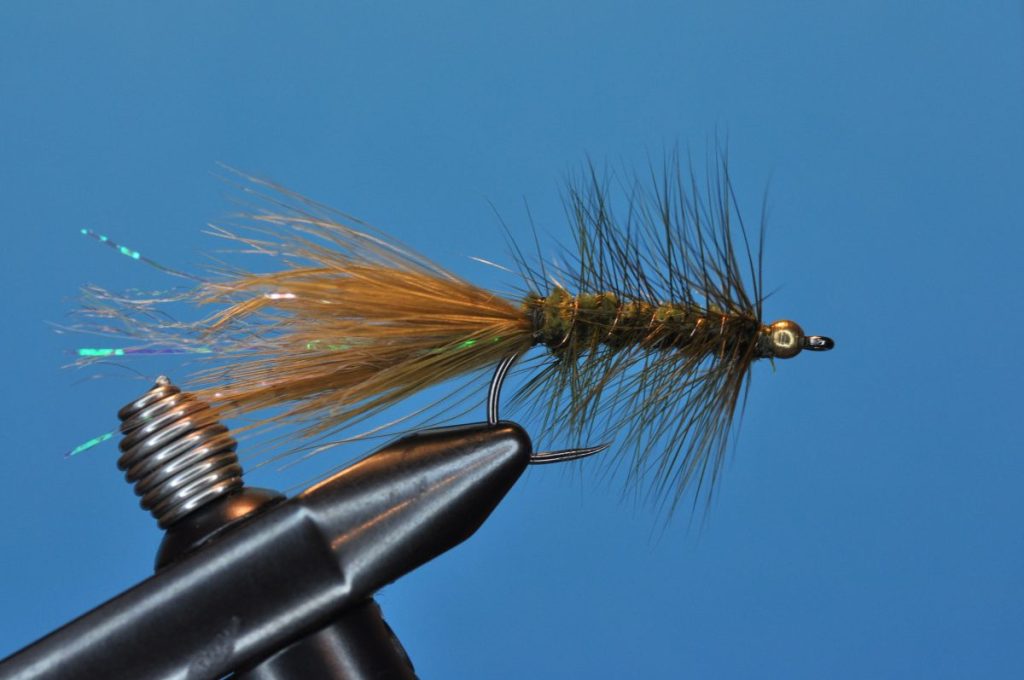
Tips and Tricks:
1. There’s no wrong way to fish a bugger
When it comes to tips and tricks, this could easily be the shortest or longest section I’ve written. The reason is…there’s no wrong way to fish a woolly bugger. Lake, pond, river, stream. Twitched, stripped, bounced, swung, dead drifted or even trolled. If fish are present, this pattern will likely catch them. Experiment with your retrieve, and you’ll eventually figure out what the fish want.
2. What else can I say, someone else already literally wrote the book now it!
For those looking to go down the rabbit hole of Woolly Bugger knowledge, check out Gary Soucie’s Woolly Wisdom. With 230+ pages devoted to Woolly Buggers, Woolly Worms and their variants, you’ll be hard pressed to find a more detailed look at these flies.
Proof of Concept
When I first compiled this step-by-step in the fall of 2020, I astoundingly could not find a single picture in my archives of a fish landed on this classic pattern. Though numerous species have fallen prey to this fly in the 20+ years I’ve spent fly fishing, I simply hadn’t taken the time to document any. Or, more likely, those images had simply been lost along the way.
Thankfully, this was easily resolved this spring as an Olive Woolly Bugger played a prominent role in my day 2 successes during The Mayfly Project’s 25 on the Fly. In all, the fly accounted for five species that day including the sizeable wild rainbow trout featured here.
Tight Lines!
Chris
